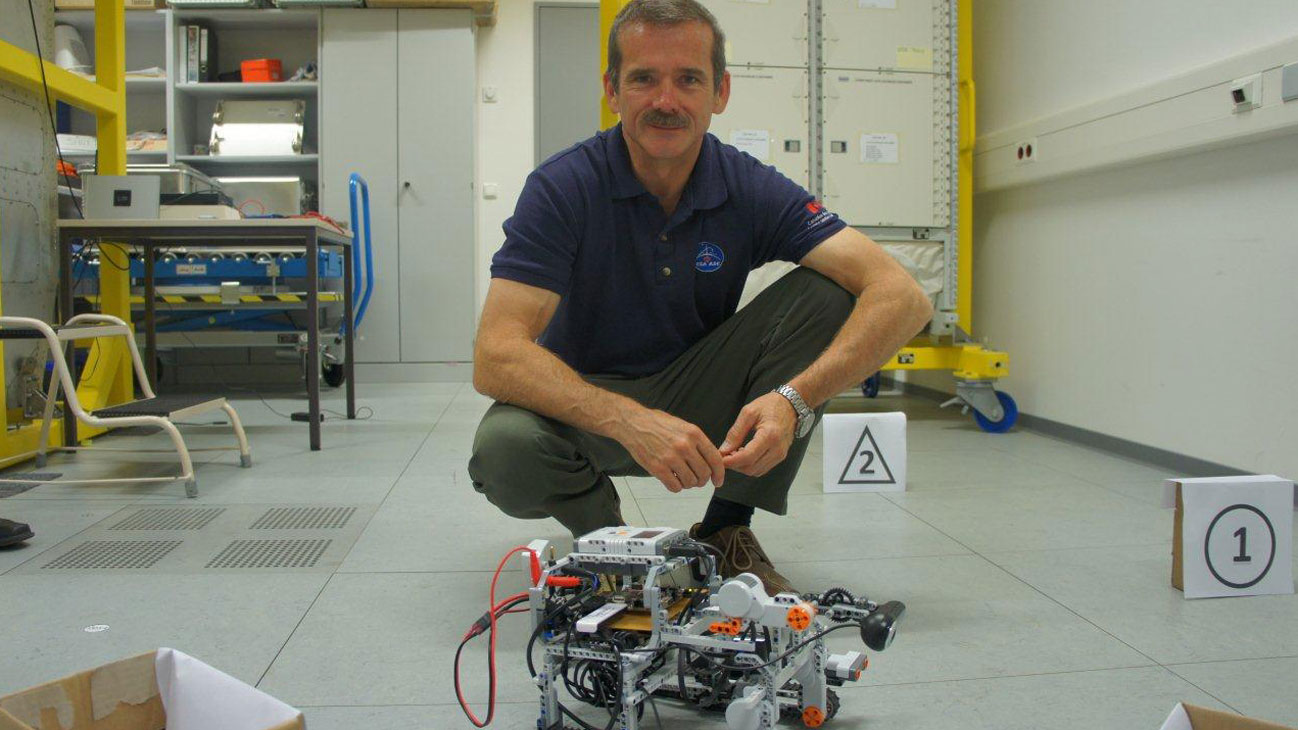Called “the most famous astronaut since Neil Armstrong,” Colonel Chris Hadfield brings the marvels of science and space travel to everyone he encounters. This past weekend,he had the honour of test driving a robot around the Tate Gallery in Britain–from the comfort of his office in Toronto. How? Read on to find out more about the Gallery’s unique program to allow the public–from anywhere in the world–to enjoy what the gallery has to offer:
In the small hours of the next five nights, things that absolutely will not go bump in the night will be roaming the galleries of Tate Britain.
After Dark will use four robots – which move at surprising speed despite looking like the love children of a close encounter between a coat rack and a standard lamp – to let the public experience the eerie thrill of visiting the sleeping art. It has won the first IK Prize for a project that widens access to art through digital technology.
Created by the design studio The Workers, After Dark was rescued from oblivion by Jane Burton, creative director of Tate Media. With the longlist already complete, she decided to go through the slush pile of dozens of discarded ideas. Most were either wildly impractical, or worthy but dull efforts from people trying to re-invent existing technology like audio guides. But the midnight robots immediately caught her imagination, though she wasn’t at all sure they could actually be built. The judging panel, including the Guardian’s Jemima Kiss, shared her enthusiasm.
When the project goes live, at 22.00 on 13 August, the robots will be controlled by members of the public logging in from anywhere in the world. They can go anywhere in the main galleries, but have been fitted with sophisticated sensors to avoid both robot wars and bumping into priceless works of art – and like the Daleks, they don’t do stairs.
Although only a few people will be able to operate them – with the design team on hand backstage to intervene or cut short a session in case of disaster or dullness – anyone will be able watch their progress via live stream.
On a trial run in the clumsy hands of this operator, a robot came heart-stoppingly close to a Henry Moore marble reclining figure, but then it backed off and slid politely along the side of the plinth before moving on to peer at another artwork, and glancing sideways at one of its colleagues which had run into a corner and was staring forlornly at the floorboards.
The project is a world first, and a more expert pilot test drove one of the robots at the weekend: Chris Hadfield, former International Space Station commander, whose performance from outer space of David Bowie’s Space Oddity has won more than 22m views on YouTube and the admiration of Bowie himself.
After the gallery closed on Saturday, Hadfield logged on from his Toronto office, drove a robot around the 20th-century sculpture gallery, and described the experience as “pretty amazing”. “You forget about the robot in your hands, and it just becomes an extension of your mind – that’s how technology ought to be,” he said.
David di Duca, one of the three-man Workers team, said the idea came from design work they were already doing at Tate Modern and the Sainsbury Centre collection at UEA in Norwich. They were struck by the magic of having the quiet galleries to themselves at night, and how powerful and different the experience was from their busy daytime life.
Each robot is mounted on a circular wheeled base that can move in any direction, with two slender stalks supporting a tilting “head” equipped with two cameras and LED lights, running on powerful batteries which will power them for the entire five-hour session until 3am. If they seem like creatrues from outer space, it’s not surprising: they were built with help from RAL Space which works with the UK Space Agency on space exploration technology.
The Workers won a £10,000 prize and a £60,000 development budget – and both the gallery and the design team are already wondering what the robots could do next.

